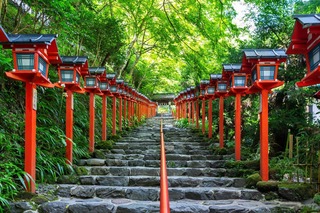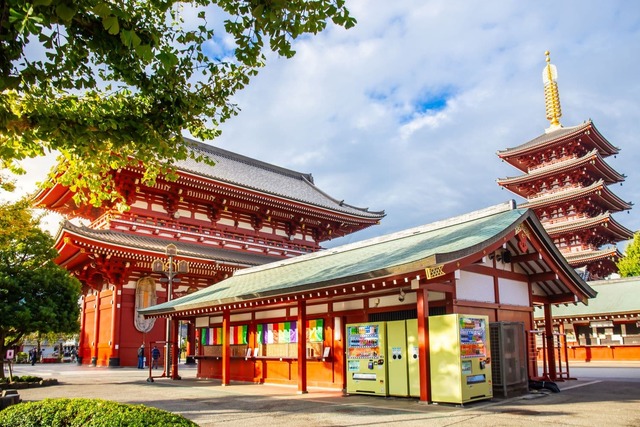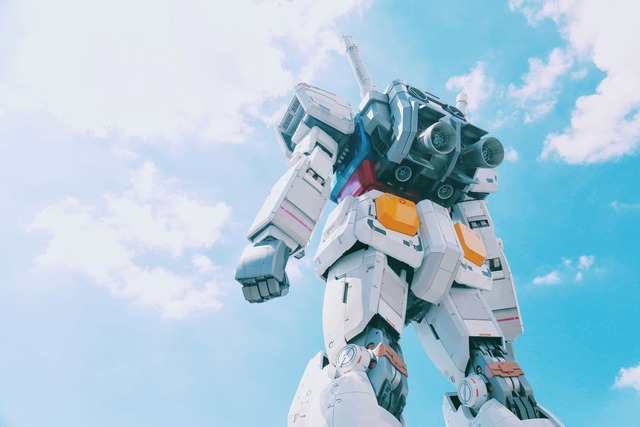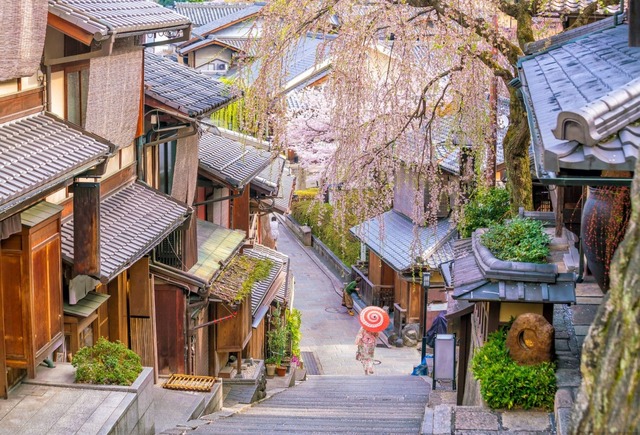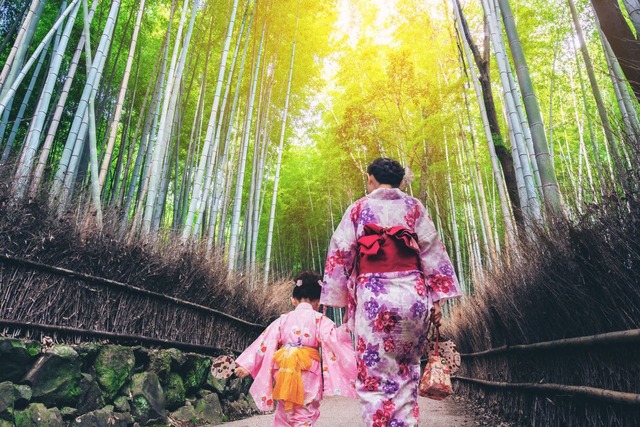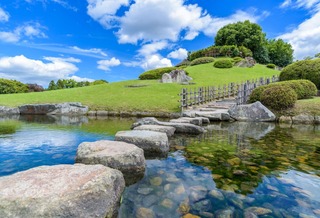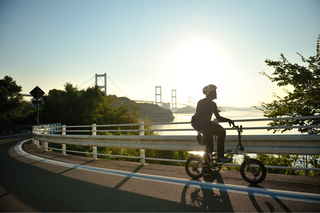Autumn in Tokyo and Kyoto





- Culture
- History
- Nature
- Family
- Seasonal
Overview
Experience the two best cities Japan has to offer, Tokyo and Kyoto, and immerse yourself in spectacular autumn coloured landscapes.
Both cities have their unique character and traditions. Tokyo is a high-tech metropolis, and Kyoto is the treasure trove of history and culture with its temples, shrines, palaces, traditional culture, and mysterious scenery.
Yet both locations also share many similarities: exquisite food, exciting nightlife, plenty of wonderful day trip destinations, and breathtaking autumn scenery, in – or close to the city centres.
Explore Tokyo and Kyoto - both ranked in the top-10 lists of best cities in the world by many travellers - in the most beautiful period of the year: autumn.
Suggested itinerary
Depart from Europe to Tokyo with an overnight flight, and prepare yourself for all the excitement the upcoming ten days will bring.
You'll arrive in Tokyo, and transfer by bus or shared taxi to your hotel in the city centre. A laid back afternoon activity like a relaxed stroll through Hamarikyu or Happoen Garden is perfect for those with some time and energy to spare.
Hamarikyu is another option, a spacious landscape garden surrounded by a seawater moat filled by Tokyo Bay. It's perfect for afternoon walks with the high-rise offices and central Tokyo hotels in the background. Take the sightseeing boat from Hamarikyu to Asakusa classical area and admire Tokyo from the water! Alternatively, head to Rikugien Garden, and admire the maple trees and have a cup of matcha at Tsutsuji Chaya teahouse.
In the evening, try a take-out meal from one of the many convenience stores (24-7-night supermarkets) or pop by a local ramen shop for a quick, cheap and satisfying meal.
Get up early and visit the outer fish market in Tsukiji. Foodies will love the market's delicious breakfast: sushi donburi, a rice bowl with super fresh fish.
Afterwards, it is time to continue to one of Tokyo's older classical neighbourhoods, Asakusa, where a visit to the impressive Senso-ji temple is on the cards. On Nakamise Street, leading up to the temple, you'll find many quaint shops to buy souvenirs and snacks.
In the afternoon, take the train west from the Shinjuku area and travel to Mt. Takao, just 50 minutes away. Hike to the top of Mt. Takao; you can take the cable car or chair lift that leads halfway up the mountain.
Along the path, admire the marvellous maple leaves, and Yakuoin, a temple, stands along the trail near the mountain's summit. Here many visitors stop there to pray to Shinto-Buddhist mountain gods (tengu) for good fortune.
Today, let's get away from the city and explore the splendid nature of Mt. Fuji and Hakone National Park.
Only one hour outside Tokyo by train, you will approach Japan's most famous sacred landmark, Mt. Fuji, at the foot of which lies Hakone National Park.
The park is an exquisite hot spring (onsen) getaway for local Japanese. To save time and money, buy a Hakone Free Pass in Tokyo, which covers Tokyo's transport and provides unlimited access to most buses, trains, cable cars, and sailboats throughout the park.
Take the mountain railway through the beautiful valleys, enjoy a relaxing boat ride on Lake Ashi and gaze up at the surrounding autumn scenery- all the while with the 3,776-meter-high Mt. Fuji towering on the horizon.
If you have more time left before getting back to Tokyo, visit Chokoku no Mori open-air museum, where you can enjoy spectacular sculptures in equally stunning natural surroundings.
You have one more day in Tokyo, so take advantage of the location and take a train from the Asakusa area to Nikko, in Tochigi prefecture, 150 kilometres north of Tokyo.
Nikko is home to the UNESCO World Heritage-listed Toshogu shrine, a mausoleum for shogun Tokugawa Ieyasu, the great military leader (and country unifier) of the early 17th century. Near Nikko, you will also find the picturesque Lake Chuzenji and the mighty Kegon Falls.
As far as the autumn leaves are concerned, the forested slopes of Mt. Nantai and the other mountains surrounding Lake Chuzenji provide excellent fall scenery, typically from mid to late October, while Ryuzu Waterfall is another popular autumn spot.
Back in Tokyo, head to Roppongi Hills complex to enjoy a sayonara (farewell) dinner at one of the many good restaurants (Japanese or Western ), then enjoy a 360-degree panorama night view from the Tokyo City View at Roppongi Hills observation deck.
It is time to get on the shinkansen (bullet train) and travel to Kyoto. In two and a half hours, you will arrive in the ancient imperial city.
Kyoto was the capital of Japan from 794 to 1868, and it has over 1600 temples and 400 Shinto shrines, a famous traditional geisha neighbourhood (Gion) and some spellbinding nature around the city centre.
An excellent introduction to Kyoto would be Kinkaku-ji, the famous and powerful Golden Pavillion. After, visit the nearby Ryoanji temple, which offers one of the best temple experiences in Kyoto thanks to its fascinating Zen garden (rock garden).
Next, head to Nijo-jo, the ancient samurai castle with giant moats, lovely paths and fine interior displays. The castle also has its own burglar alarm - the so-called wooden nightingale floor, which "chirps" no matter how quiet you sneak on it, as it was created to protect against hostile intruders.
End the day with an informal but tasty Kyoto welcome dinner at an izakaya (Japanese pub) in the central Kawaramachi or Kiyamachi streets, where you will find many lovely shops, restaurants and bars.
After breakfast, make your way to the quiet, forested foothills of Yase in Kyoto’s north-east — a part of the city often missed by visitors. Take the charming electric train to Yase-Hieizan-guchi railway station, and if time allows, pause for a moment of meditation at the small Renge-ji Temple, known for its peaceful garden and seasonal beauty.
From there, continue your journey up towards Yase via cable car and ropeway, enjoying the gradual shift in landscape as the city gives way to forested slopes. At the summit, explore the vast temple complex of Enryaku-ji, once the spiritual stronghold of warrior monks and an important centre of Buddhist learning. After your visit, descend the mountain and return to the city.
Put aside today to explore the gorgeous autumn panoramas in the mountainous northwestern part of Kyoto, notably the regions Arashiyama and Sagano.
Take a local train from Kyoto station and travel to Arashiyama Station. From Arashiyama station, walk to Togetsukyo bridge (over Katsura river) for an impressive view of the hills of Arashiyama's breathtaking red-yellow autumn colours. Then walk through the nearby majestic Sagano Bamboo Forest. Take plenty of time to walk around the forest, enjoy the views of central Kyoto and make sure to visit Tenryu-ji temple, with its vast landscape garden and Daikaku-ji temple from which you can enjoy views from the temple viewing platform.
Make sure to visit World Heritage Site Kozan-ji temple, which dates to 774. Inside Kozan-ji, visitors can see what is considered Japan's first manga (comic), a scroll depicting animals in a satire of the court life of the early Heian Period (9th century).
Stroll one of many trails, like the Kiyotaki river trail, that leads you through the forest and valley, along the river, with breathtaking views on the steep mountainsides, and soak up the vast autumn colours. Late afternoon or early evening, take a bus or train back to central Kyoto.
On this final full day in Kyoto, take the train from Kyoto Station to the ancient capital of Nara, which is just as gorgeous as Kyoto but with an even older history.
Take your time to visit the breathtaking Todai-ji temple and visit the central hall Daibutsuden containing the famous bronze Great Buddha statue. Next, take a walk through the extensive and hilly Nara Park and feed the sacred and friendly deer that roam the area.
Later, visit Mt. Shigi, where Chogosonshi-ji temple offers lovely views of Nara; its surrounding hillsides are home to wonderful autumn colours and even lodgings for travellers.
Alternatively, visit Horyuji temple (12 kilometres east of Nara city), which has a 1500-year history and contains some of the world's oldest surviving wooden structures.
If you feel you would like to give classical Kyoto and Nara a miss and focus on modern city delights instead, take a direct train to Osaka.
Visit Osaka Castle and surrounding park, then continue by subway south to Shinsaibashi or Namba area, the perfect place to try takoyaki, a local speciality at one of the many small restaurants lining Dotonbori Avenue and river. In the afternoon, visit Osaka Kaiyukan (Aquarium) at Tempozan Harbour, one of the best and largest aquariums in the world.
Now the time has come to sadly say goodbye to Japan and all its autumn beauty. You will transfer by airport bus or shared taxi from your hotel to Osaka Kansai International airport (90 minutes), from which your return flight to Europe will depart.
We hope this experience made you fall in love with Japan and has left you eager to come back for more!
Accommodation
Important information
Important information
- Travel insurance is optional. Let us know if you’d like help adding it to your trip.
- The itinerary shown is an example. We’ll tailor the tour to fit your interests and travel style.
- Once you get in touch, we’ll fine-tune the details together to make sure the trip suits you perfectly.
What is included
- International return flight tickets
- Checked luggage
- Airport transfers
- 8 nights in western style accommodations
- Transport tickets between destinations
What is not included
- Breakfast at hotels and other meals
- Local transport (buses, metro, taxis)
- Local city tax which needs to be paid on the spot
- Optional excursions and sightseeing tours
- Travel insurance



























